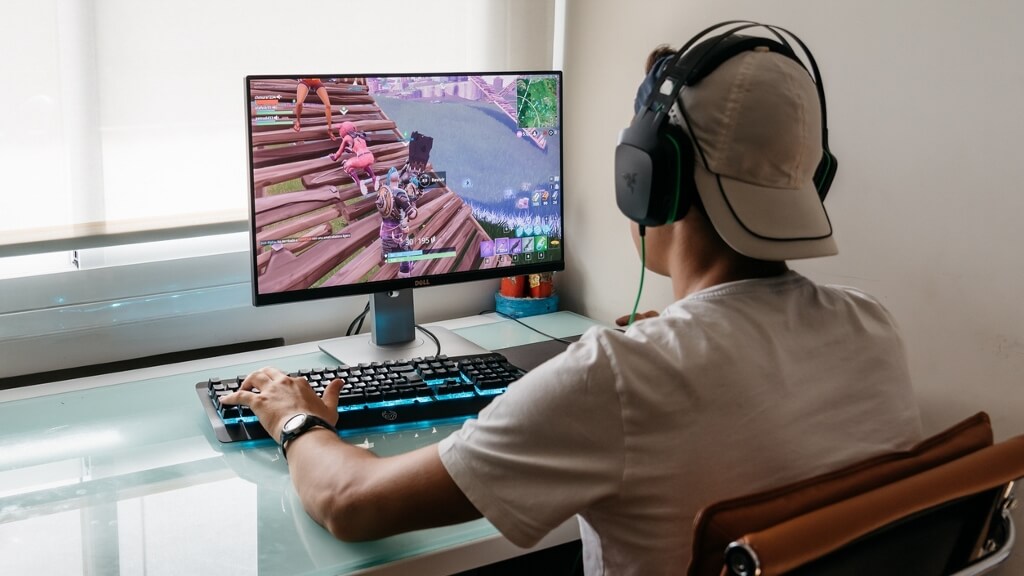How Tech Startups Can Mimic Fortnite’s Wildly Successful Monetisation Strategy
How does a freemium game like Fortnite make more money than its paid-for rivals?

With Fortnite on track to make more than $3 billion in 2018, tech startups in many other fields can learn from how this phenomenally successful video game has monetised a free-to-play service.
Created in 2017 by Epic Games, the Fortnite franchise has found its way into headlines by being insanely popular, with 400 million players and counting. What’s more, it’s making more money than similar games with substantial price tags.
Free-to-play games are not new, neither is the tactic of selling extras - but while many previous examples have succeeded in attracting players, their financial stories have been considerably less impressive.
With so many technology companies employing some aspect of the philosophy of giving something away for nothing in search of gains to come, what can other sectors learn from the gaming world’s most glittering example of freemium success?
Turn a free price tag into a virtue
Fortnite was not the first free-to-play game - however, it is unusual in being entirely free to download on virtually any platform (including mobile gamers using android emulator such as Bluestacks to run mobile version on PC), with obvious benefits to the size of its potential audience.
Deliberately cultivating a broad appeal has also helped increase the audience. Its colourful, cartoonish aesthetic and comparatively tame violence means it can be played in every household and by people of all ages. In this regard, there are very few barriers blocking a games enthusiast from becoming a fan.
This dedication to building a vast audience is one that many technology companies rely on. Accessibility, audience range, and formats are three key factors to look into when considering how a business can increase its user base.
Dedication to customer experience above all else
Free-to-play games have been doing good business since the invention of the smartphone in the addictive tradition of Angry Birds. Fortnite differed most radically from its predecessors in finding a way to sell extras without compromising the experience for others. Prioritising fairness and keeping the community happy over a quick buck.
Most free games work by offering a fairly basic version, then players pay for the best bits - bigger weapons to fire, health boosts to save you from certain death etc. Much like the difference in enjoying Spotify without the adverts.
Yet in Fortnite, however much money you pay you cannot get a better gun, unlock new worlds or improve your avatar’s skill or capabilities – that’s all down to the player’s skill and commitment.
Which begs the question – why would anyone part with their money? This is where Fortnite’s monetisation strategy gets fascinating. The game’s currency - V-bucks - can be used to buy superficial additions like clothes and dance moves.
They add more joy and have helped build a whole culture, but don’t change the outcome or experience of gameplay.
What sounds like frippery has turned out to be perfect. These additions can be bought and instantly enjoyed without compromising the fundamental fairness of the game or risking a backlash in the loyal community of players on which its financial success depends.
This commitment to fair play and to put revenue streams before customer satisfaction has created a level of brand loyalty and positivity towards the game that is hard to put a price on.
Tap into buying psychology
Whether by accident or design, Fortnite’s particular monetisation strategy has tapped into the psychology of gamers and the desire to show expertise and commitment.
New players are instantly recognisable by their standard issue clothes or ‘skins’. As nobody wants to look like a rookie, players are keen to buy new skins. What’s more, avatar fashions work much like real-world fashions - everyone wants the hot new thing. This has created an almost limitless desire for creative new additions to tempt players.
While not every business can tap into the desire to be fashionable, everyone can benefit from thinking through the psychology behind buying decisions.
Even b2b firms rely on real human beings deciding to make a purchase, and however much those decisions are post-rationalised, emotions play a part. Startups that take the time to think this through and tap into this psychology through their marketing can reap the benefits.
Stand out from the pack
On release, Fortnite was widely dismissed as little more than a Player Unknown: Battlegrounds (aka PUBG) rip-off. The higher-ups were clearly listening, though, because since its early days, Fortnite has blossomed into its own unique brand.
With its cartoony art style and colourful landscapes, Fortnite branched out on its own and started setting the trends, rather than following them.
The lesson here is to stand out from the crowd. They say that there are no original ideas anymore, which is fine so long as you can make what you’re selling distinguishable.
Build a brand that travels
The victory dances in Fortnite have become so popular, even Premier League footballers are busting out the moves as goal celebrations - you may have seen Dele Alli unleashing one in the World Cup against Sweden. You can’t buy that sort of publicity.
The game enjoys exposure on many different platforms and outlets; its raging success spreading into mainstream pastimes like football proves not only its runaway popularity but the effectiveness of distinctive, accessible and relatable imagery.
While most businesses might not be able to work dance moves into their marketing, every brand can benefit from some concentrated thought into how it can stay true to itself and how it can work with its community to build lasting influence as well as quick attention.
This can be as simple as easily recognisable imagery and a style that signals your company’s name.
Reward the community with regular updates
The Fortnite teams are kings of keeping things fresh. Each week, players are offered new time trials and challenges to complete for exciting rewards and bonuses.
This tactic gives players a reason to step back into the fold every single week, always with new goals to accomplish and only a short space of time to complete them in. Compare this to the 2016 sensation Pokémon Go, which lost steam quickly thanks to its lack of updates and objectives in its early months.
Your business might not lend itself to a weekly time trial, admittedly, but there’s still plenty to be said for keeping things fresh and giving people a reason to return to your product. Discounts, new stock, special offers, a keyring, a cup of tea while you wait - there’s always something that’ll bring people back.
Fortnite’s success goes beyond the classic audience-building strategy employed by previous free games like Pokémon Go, to deliver commercial success by creating enjoyable buying experiences, a fair and simple currency system that doesn’t allow players to buy their way in and rewarding loyalty with regular releases.
Above all is an unflinching commitment to its mission - in this case creating an ever-more-enjoyable playing experience.
Darren Fell is CEO and founder of Crunch.
Thanks for signing up to Minutehack alerts.
Brilliant editorials heading your way soon.
Okay, Thanks!


